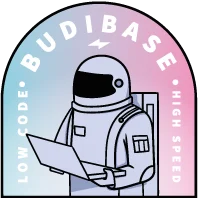
Think fast
Thoughts and ideas on how to build tools, automate workflows and speed-up the workplace.
What is Citizen Development? + 5 Tips
Citizen development is a kind of a buzz phrase nowadays. But, why? More to the point, what does this even mean? Is it just the flavor of the month or does it offer a serious prospect for improving your IT operations? These are the questions we’re answering today. As more and more businesses turn to their non-technical employees to plug gaps in their development workflows, it’s no surprise that you might want to see what all the fuss is about.
Ronan McQuillan
Sep 20, 2022
Citizen Development Governance | In-Depth Guide
More and more companies are turning to their business users to solve business problems with bespoke apps. However, this creates a whole range of new challenges for your IT team. Today we’re diving deep into citizen development governance. Citizen developers are ordinary, non-technical employees, who have been empowered to create solutions for their teams, rather than waiting for the IT specialists to do it for them. This can offer huge value, but only if your team has the right governance framework to work within.
Ronan McQuillan
Sep 19, 2022
Empowering Citizen Developers | Ultimate Guide
IT teams have never been busier. Combine increasing demand for custom solutions with a global shortage of qualified developers, and it’s no wonder that delays, roadblocks, and backlogs occur. One solution is creating an army of citizen developers. And it’s becoming a more and more popular solution too. Despite this, relying on citizen developers isn’t always plain sailing. When done right, this can offer huge financial, cultural, and operational benefits. When done wrong, you’ll encounter unnecessary risks, mistakes, and costs.
Ronan McQuillan
Sep 19, 2022
Top 5 Rapid Application Development Tools
Choosing the right rapid application development tools for your team is a tricky prospect. Most software procurement decisions come down to finding the most cost-effective way to perform a specific task. RAD is a little bit different. It’s not so much concerned with what you do, as how you do it. So, yes, RAD tools enable your development team to build software solutions, but more importantly, they allow them to do it quickly.
Ronan McQuillan
Sep 19, 2022
What is Throwaway Prototyping? In-Depth Guide
Throwaway prototyping is an alternative way of thinking about building applications. Prototypes play several vital roles in the development process. For instance, providing proof of concept, fleshing out NFRs, experimenting with ideas, or simply gathering feedback. There’s an innate tension here though. On the one hand, prototyping obviously drains resources. Namely, development hours and the labor costs that come along with them. On the flip side, this expenditure can be hugely beneficial, or even completely central to a project.
Ronan McQuillan
Sep 19, 2022
9 Enterprise Software Industry Trends for 2024
The way we build tools is constantly changing. New technologies, emergent risks, and external economic factors have always influenced business’ decision-making. Today we’re looking at nine enterprise software industry trends for 2023. But how much changes in a year really? It’s not like we’re all going to wake up on January 1st and completely gut our software stacks, is it? Unfortunately, it’s even worse than that. These changes are already on your doorstep.
Ronan McQuillan
Sep 18, 2022
7 Essential Types of Enterprise Software | 2024 Guide
In large organizations, demand for digitalization is on an exponential trajectory. However, there’s no single, unitary approach to building tools. Today we’ll explore why as we dive into the essential types of enterprise software. It should go without saying that unique workflows require unique solutions. So, we know that every enterprise and its constituent departments, teams, and business functions faces its own challenges, opportunities, and risks. Still, it’s not as if every software project is completely sui generis.
Ronan McQuillan
Sep 9, 2022
How to Build a MongoDB CRUD App with Budibase
NoSQL databases such as MongoDB seem intimidating at first. The MongoDB CRUD operations come from a different paradigm, which might be confusing if you are used to SQL databases. But it doesn’t need to be this way. Instead of manually figuring out how to perform CRUD operations in MongoDB, you can use the power of low-code to do it for you. That is, create an app that handles these differences, allowing you to interact with your DB, just like you would with other tools, like phpMyAdmin.
Ronan McQuillan
Aug 22, 2022